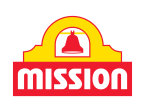
Tech Tuesday: Helpful Helmet Tips
Last week's Tech Tuesday featured proper helmet fitting procedures. This week, we will cover what you need to know when it comes to proper helmet care and additional related helmet questions.
Having a properly fitting helmet is the most critical component you should factor in when looking to purchase a new helmet, and when spending hundreds of dollars on a new helmet, it's vital that you properly maintain it. We caught up with Arai’s Bruce Porter to get helmet care tips from one of the best in the industry.
AMAP: How long can my helmet last?
BP: The industry standard is three to five years. Many helmets come with a five-year warranty. There are certain things you must do to get your helmet to last that long. An important thing many people either forget to do, or haven’t thought of doing is cleaning the inside of their helmet. You need to wash the interior at least once every year.
Short of a crash, what you leave inside a helmet is what will ultimately end its lifespan. It’s the accumulation of dirt, acids, salt, hair products, perspiration and make-up that act as contaminants that negatively affect the expanded polystyrene (EPS) liner. Cleaning the contaminants from the EPS liner is a very important task to do at least once a year to avoid breakdown. Many helmet manufacturers offer removable cheekpads and interior components (known as the comfort liner) to allow for easy cleaning.
AMAP: What’s the best way to clean the comfort liner of my helmet?
BP: If you’re an everyday motorcycle rider, regularly cleaning your comfort liner will give your helmet a like-new feeling. Take for example a police officer on a motorcycle, who wears their helmet every day. They most likely wash their helmet’s comfort liner as often as they wash their uniform, in order to keep it clean and have the interior fit like-new. You can wash the comfort liner as much as you like. The best place to wash your helmet’s comfort liner is not in a washing machine and dryer, but the kitchen sink with luke warm water and the shampoo from your bathroom. You won’t have a reaction to the shampoo, because you use it every day. A few drops of shampoo, water and lathering will shock you how much dirt and grime comes out. When drying, you should let the liner sit out to air dry. By machine drying, you drastically shorten the comfort liner’s lifespan. For all the off-road and road racers, you should clean your comfort liner after every ride. By cleaning the comfort liner on a regular basis, you will greatly improve the lifespan of your helmet.
Another piece of advice would be to physically wipe down the EPS liner with a damp rag at least once a year. This will keep the liner clean and maintain its energy absorbing capabilities.
AMAP: What about cleaning the exterior of my helmet?
BP: For SNELL certification, any appendage or device attached to the exterior to the helmets shell that protrudes more than 5mm should be attached so that it can be easily scrubbed from the shell in the case of an accident. This relates primarily to the ventilation pieces on your helmet. If you drop your helmet or are involved in an accident, these pieces are designed to easily separate from the shell so they don’t catch on anything, which could increase the likelihood of spinal or bodily injury. These pieces are fitted with double-sided adhesive, so when it comes time to clean the exterior of your helmet, never directly spray any cleaner, polish, wax, etc. on the helmet. Instead, spray it on a cloth or high-end paper towel, then wipe down the exterior of the helmet. If you directly spray the shell’s exterior, the spray could affect the adhesive which could prematurely wear the piece’s lifespan.
Q: What about applying chemicals to my visor?
A: Never spray a helmet’s shield with a synthetic, water-beading rain treament such as Rain-X. Treatments such as Rain-X are designed for glass. Even after a single application of a harsh cleaner, a helmet’s shield drastically loses its strength.
Q: I had my helmet fall off my motorcycle, or it slipped out of my hand. Do I need to buy a new helmet?
A: A helmet is an action/reaction piece of gear. If it doesn’t have at least five kilograms of body mass (your head) inside of it to react against the EPS liner, it won’t affect its protective capability. You can scratch the paint, break an air vent, or scratch your visor, but your helmet will still be usable. When you crash your motorcycle and hit your head, the first thing your head hits is the inside of the helmet. If you feel that your helmet is beyond repair, you should send it off to be inspected.
Also, I want to add one more thing. If you experience any loss of consciousness during a motorcycle accident, your helmet is done. Keep in mind, your helmet is a piece of protective gear that is designed to absorb energy and protect you for one crash only.
A little background on Bruce Porter:
Porter provides a service known as “race service” at AMA Pro Road Races. When racers drop their Arai Helmets off at his tent, he immediately dries the interior of their helmet, polishes the exterior, clean the shields, changes the tint of the shield depending on weather conditions and installs “tear-offs.” The purpose of a tear-off is to allow riders to tear off multiple thin plastic films from their helmet’s shield in order to have the clearest view throughout the race. Porter plays a critical role in helping to keep riders focused on the job they need to do by removing the burden of keeping their own helmets in optimal condition. The racer and his relationship to the crew chief is a key component to a great race weekend, so being able to take any burden out of the racer’s day relieves stress from his weekend and gives him more time to talk strategy with his team, thereby improving overall performance.
Porter has participated in over 300 International Motorcycle Shows and is a professional speaker who highlights the intricacies of proper helmet fit. Over the course of his career, he has fitted helmets for over 500,000 motorcyclists.
What's your take?
 AMA Pro Road Racing on Facebook
AMA Pro Road Racing on Facebook
For all the track day riders and weekend racers, do you know how to properly safety-wire a motorcycle? 































